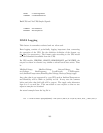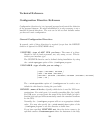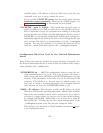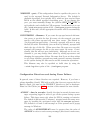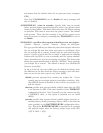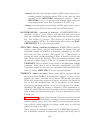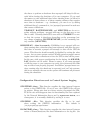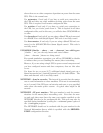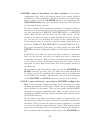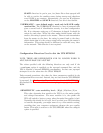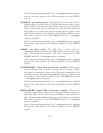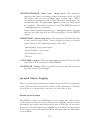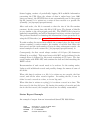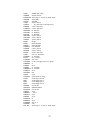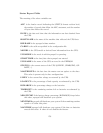where there are no other computers dependent on power from the same
UPS. This is the normal case.
Use netmaster, if and only if you have a serial port connection to
the UPS and there are other machines deriving power from the same
UPS. This is required in all master configuration files.
Use netslave if and only if you have no serial port connection to
the UPS, but you derive power from it. This is required in all slave
configuration files, and in this case, you will also have UPSCABLE set
to ether.
Use shareslave if and only if you are using a ShareUPS and connected
to a BASIC Port with Simple Signal. This code is not fully tested.
Use sharemaster, if and only if you are using a ShareUPS and con-
nected to the ADVANCED Port Smart Signal control. This code is
not fully tested.
UPSMODE [disable — share — net — sharenet ] are valid types.
[ disable — net ] are the only known and tested classes.
[ share — sharenet ] classes are being tested.
For normal standalone operations, you will set UPSMODE to disable
to indicate that you are disabling the master/slave networking.
However, if you are using a single UPS to power several computers and
you have configured master and slave computers, then set this value
to net.
Use share for two or seven (2/7) additional simple signal ports on a
SmartAccessories(tm) (internal/external box) for SmartUPSes. The
share and sharenet code is not fully tested.
NETTIME <time in seconds> The interval in seconds that the master
uses to send information to slave machines. This rate is automatically
set to 1 second if the UPS goes on batteries and reset to your specified
value when the mains power returns. A typical value might be 60
seconds.
NETPORT <IP port number> This port number is used for commu-
nications in the master/slave networking code. Note that the mas-
ter and each slave must have the same port number specified on the
NETPORT directive in the configuration file. This port may also be
specified during installation by using the --with-net-port= option of
the ./configure program.
The NETPORT should not be confused with the port number for the
Network Information Server which is specified with the SERVER-
PORT configuration directive.
171



